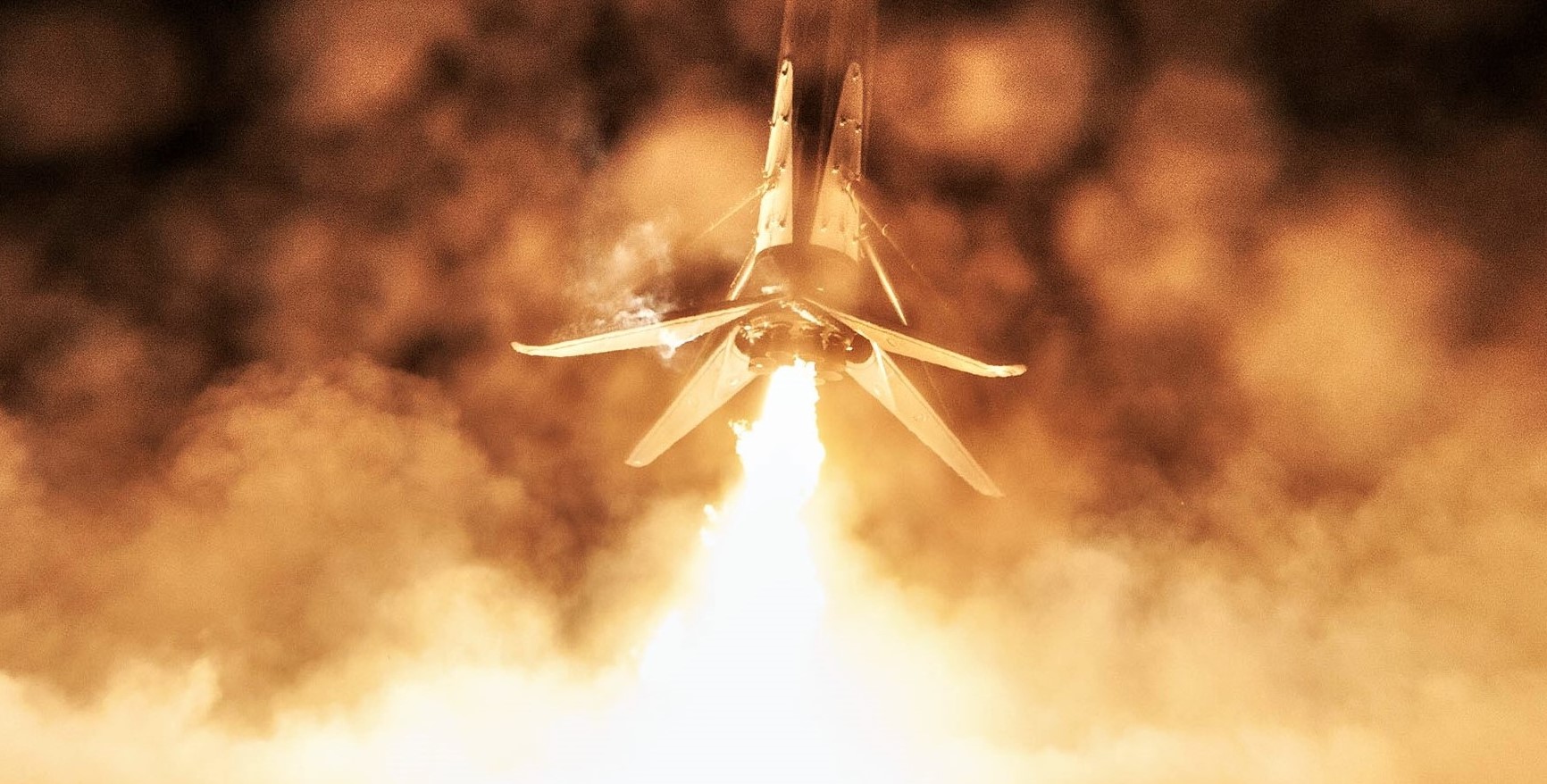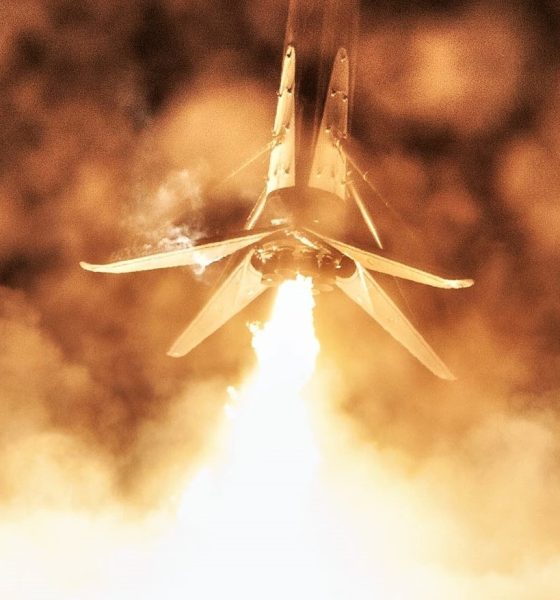

News
SpaceX’s next West Coast Falcon 9 landing could be decided by baby seals
SpaceX and the Canadian Space Agency (CSA) have – at long last – officially announced a launch date for the Radarsat Constellation Mission (RCM), a ~$1B trio of Earth observation satellites.
Delayed from November, February, March, and May, RCM is now scheduled to launch on a flight-proven Falcon 9 booster from California’s Vandenberg Air Force Base (VAFB) no earlier than June 11th. The three flight-ready spacecraft were shipped from Canada in September 2018 and have now been awaiting launch in a Southern California storage facility for more than half a year. The blame for such an egregious delay can be largely placed on SpaceX, but CSA and launch customer Maxar Technologies are also partially responsible. On a lighter note, the location of RCM’s subsequent Falcon 9 landing might end up being decided by seal pupping – baby harbor seals, in other words.
Although RCM’s slip from 2018 to 2019 remains unexplained, the mission’s journey from mid-February to mid-June is a different story. Still, next to nothing is publicly known about the process SpaceX launch customers go through after contracts have been signed, particularly with respect to how Falcon boosters are assigned to missions. This is further stymied by the fact that – to date – the ~$1 billion RCM is probably the most valuable payload SpaceX has ever attempted to launch, making it a clear outlier. But, as they say, “damn the epistemological torpedoes!”
Rocket logistics hell
RCM’s logistical hell and ~6 months of delays began on December 5th, 2018 when Falcon 9 Block 5 booster B1050 – having just completed its inaugural launch debut – experienced a hydraulic pump failure. The first of its kind, B1050’s pump failure killed grid fin control authority and forced the booster to abort into the Atlantic Ocean, where it somehow pulled off a landing soft enough to leave the rocket almost entirely intact. Even more surprisingly, B1050 was safely towed back to port, lifted onto dry land, and shipped off to one of SpaceX’s many Florida hangars for inspection.
Despite its near-miraculous survival, B1050 was immediately removed from SpaceX’s fleet of flightworthy boosters. Set to become the least flight-proven flight-proven Block 5 booster yet after supporting a low-energy Cargo Dragon mission, SpaceX and CSA/Maxar had apparently reached an agreement to launch RCM on B1050.2. Despite the availability of other boosters at the time, all available cores had completed two launches (B1046, 47, and 48) or were assigned to a second launch in the near-term (B1049). This is the only rational explanation for the delays that followed.
B1049 completed its second launch in mid-January 2019 and has since floated around various SpaceX facilities while waiting for its third mission. Had CSA/Maxar been okay with a twice-flown Falcon 9, B1049 could have likely supported RCM’s launch as early as March or April. Instead, the customer – as was apparently their right – concluded that being a booster’s third launch would be an unacceptable risk, whereas launching on a once-flown booster was acceptable. The only possible solution to those demands was to manifest RCM on Falcon 9 B1051, assigned to Crew Dragon’s launch debut.
Quite possibly the worst booster one could pick for schedule preservation, Crew Dragon’s launch debut slipped – to the surprise of very few – from January to February and finally to March 3rd. B1051 launched, landed without issue, and returned to Port Canaveral a few days later, where it was transported to Pad 39A for refurbishment. The relatively gently-used booster required a bit less than 8 weeks of inspection and refurbishment before being packaged and shipped to California near the end of April (see above). By now, B1051 is likely safely inside SpaceX’s SLC-4E integration hangar, preparing for upper stage integration and a routine pre-launch static fire test.



In short, an untimely Falcon 9 anomaly and customer preferences conspired to delay the launch of Canada’s Radarsat Constellation Mission by nearly four months, from February 18th to June 11th. With any luck, the mission’s flow will be issue-free and suffer no additional delays.
FCC launch communications licenses currently show that SpaceX plans to return Falcon 9 B1051 to the launch site (RTLS) after launch, rather than landing aboard drone ship Just Read The Instructions (JRTI). With a total launch mass likely around 5000 kg (11,000 lb), Falcon 9 should easily be able to manage a RTLS recovery. However, SpaceX’s West Coast LZ-4 use permit prevents the company from landing rockets at the pad during harbor seal pupping season, typically March thru June. The sonic booms and noise generated during Falcon 9’s spectacular landings might end up stressing endangered harbor seals, potentially causing parents to abandon their seal pups in confusion. As such, JRTI may be forced to get some exercise after spending almost five months in port. Anything for the baby seals!
Check out Teslarati’s Marketplace! We offer Tesla accessories, including for the Tesla Cybertruck and Tesla Model 3.

Elon Musk
Elon Musk’s X will start using a Tesla-like software update strategy
The initiative seems designed to accelerate updates to the social media platform, while maintaining maximum transparency.

Elon Musk’s social media platform X will adopt a Tesla-esque approach to software updates for its algorithm.
The initiative seems designed to accelerate updates to the social media platform, while maintaining maximum transparency.
X’s updates to its updates
As per Musk in a post on X, the social media company will be making a new algorithm to determine what organic and advertising posts are recommended to users. These updates would then be repeated every four weeks.
“We will make the new 𝕏 algorithm, including all code used to determine what organic and advertising posts are recommended to users, open source in 7 days. This will be repeated every 4 weeks, with comprehensive developer notes, to help you understand what changed,” Musk wrote in his post.
The initiative somewhat mirrors Tesla’s over-the-air update model, where vehicle software is regularly refined and pushed to users with detailed release notes. This should allow users to better understand the details of X’s every update and foster a healthy feedback loop for the social media platform.
xAI and X
X, formerly Twitter, has been acquired by Elon Musk’s artificial intelligence startup, xAI last year. Since then, xAI has seen a rapid rise in valuation. Following the company’s the company’s upsized $20 billion Series E funding round, estimates now suggest that xAI is worth tens about $230 to $235 billion. That’s several times larger than Tesla when Elon Musk received his controversial 2018 CEO Performance Award.
As per xAI, the Series E funding round attracted a diverse group of investors, including Valor Equity Partners, Stepstone Group, Fidelity Management & Research Company, Qatar Investment Authority, MGX, and Baron Capital Group, among others. Strategic partners NVIDIA and Cisco Investments also continued support for building the world’s largest GPU clusters.
News
Tesla FSD Supervised wins MotorTrend’s Best Driver Assistance Award
The decision marks a notable reversal for the publication from prior years, with judges citing major real-world improvements that pushed Tesla’s latest FSD software ahead of every competing ADAS system.

Tesla’s Full Self-Driving (Supervised) system has been named the best driver-assistance technology on the market, earning top honors at the 2026 MotorTrend Best Tech Awards.
The decision marks a notable reversal for the publication from prior years, with judges citing major real-world improvements that pushed Tesla’s latest FSD software ahead of every competing ADAS system. And it wasn’t even close.
MotorTrend reverses course
MotorTrend awarded Tesla FSD (Supervised) its 2026 Best Tech Driver Assistance title after extensive testing of the latest v14 software. The publication acknowledged that it had previously criticized earlier versions of FSD for erratic behavior and near-miss incidents, ultimately favoring rivals such as GM’s Super Cruise in earlier evaluations.
According to MotorTrend, the newest iteration of FSD resolved many of those shortcomings. Testers said v14 showed far smoother behavior in complex urban scenarios, including unprotected left turns, traffic circles, emergency vehicles, and dense city streets. While the system still requires constant driver supervision, judges concluded that no other advanced driver-assistance system currently matches its breadth of capability.
Unlike rival systems that rely on combinations of cameras, radar, lidar, and mapped highways, Tesla’s FSD operates using a camera-only approach and is capable of driving on city streets, rural roads, and freeways. MotorTrend stated that pure utility, the ability to handle nearly all road types, ultimately separated FSD from competitors like Ford BlueCruise, GM Super Cruise, and BMW’s Highway Assistant.
High cost and high capability
MotorTrend also addressed FSD’s pricing, which remains significantly higher than rival systems. Tesla currently charges $8,000 for a one-time purchase or $99 per month for a subscription, compared with far lower upfront and subscription costs from other automakers. The publication noted that the premium is justified given FSD’s unmatched scope and continuous software evolution.
Safety remained a central focus of the evaluation. While testers reported collision-free operation over thousands of miles, they noted ongoing concerns around FSD’s configurable driving modes, including options that allow aggressive driving and speeds beyond posted limits. MotorTrend emphasized that, like all Level 2 systems, FSD still depends on a fully attentive human driver at all times.
Despite those caveats, the publication concluded that Tesla’s rapid software progress fundamentally reshaped the competitive landscape. For drivers seeking the most capable hands-on driver-assistance system available today, MotorTrend concluded Tesla FSD (Supervised) now stands alone at the top.
News
Elon Musk’s Grokipedia surges to 5.6M articles, almost 79% of English Wikipedia
The explosive growth marks a major milestone for the AI-powered online encyclopedia, which was launched by Elon Musk’s xAI just months ago.

Elon Musk’s Grokipedia has grown to an impressive 5,615,201 articles as of today, closing in on 79% of the English Wikipedia’s current total of 7,119,376 articles.
The explosive growth marks a major milestone for the AI-powered online encyclopedia, which was launched by Elon Musk’s xAI just months ago. Needless to say, it would only be a matter of time before Grokipedia exceeds English Wikipedia in sheer volume.
Grokipedia’s rapid growth
xAI’s vision for Grokipedia emphasizes neutrality, while Grok’s reasoning capabilities allow for fast drafting and fact-checking. When Elon Musk announced the initiative in late September 2025, he noted that Grokipedia would be an improvement to Wikipedia because it would be designed to avoid bias.
At the time, Musk noted that Grokipedia “is a necessary step towards the xAI goal of understanding the Universe.”
Grokipedia was launched in late October, and while xAI was careful to list it only as Version 0.1 at the time, the online encyclopedia immediately earned praise. Wikipedia co-founder Larry Sanger highlighted the project’s innovative approach, noting how it leverages AI to fill knowledge gaps and enable rapid updates. Netizens also observed how Grokipedia tends to present articles in a more objective manner compared to Wikipedia, which is edited by humans.
Elon Musk’s ambitious plans
With 5,615,201 total articles, Grokipedia has now grown to almost 79% of English Wikipedia’s article base. This is incredibly quick, though Grokipedia remains text-only for now. xAI, for its part, has now updated the online encyclopedia’s iteration to v0.2.
Elon Musk has shared bold ideas for Grokipedia, including sending a record of the entire knowledge base to space as part of xAI’s mission to preserve and expand human understanding. At some point, Musk stated that Grokipedia will be renamed to Encyclopedia Galactica, and it will be sent to the cosmos.
“When Grokipedia is good enough (long way to go), we will change the name to Encyclopedia Galactica. It will be an open source distillation of all knowledge, including audio, images and video. Join xAI to help build the sci-fi version of the Library of Alexandria!” Musk wrote, adding in a later post that “Copies will be etched in stone and sent to the Moon, Mars and beyond. This time, it will not be lost.”








